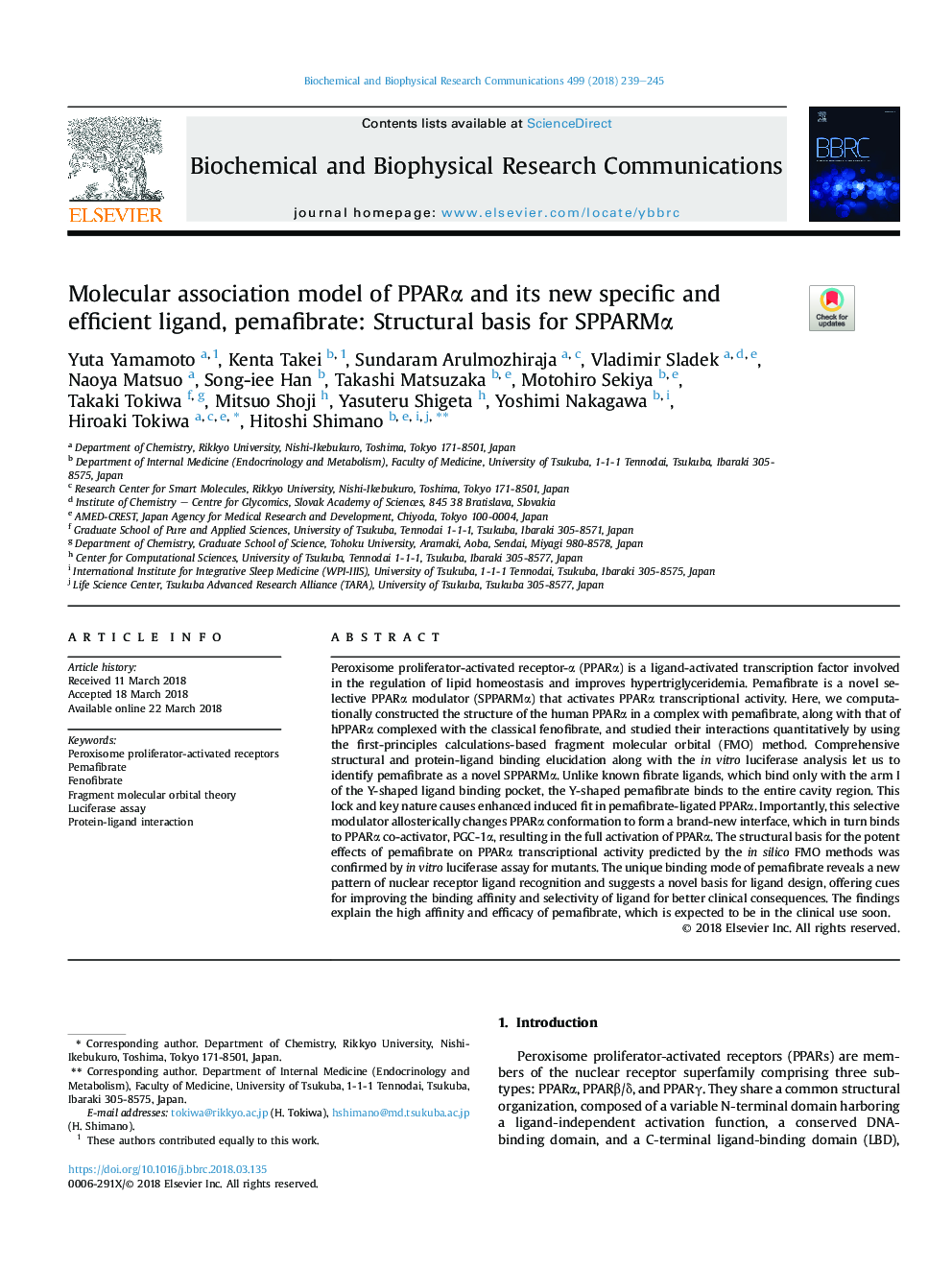| کد مقاله | کد نشریه | سال انتشار | مقاله انگلیسی | نسخه تمام متن |
|---|---|---|---|---|
| 8293147 | 1536742 | 2018 | 7 صفحه PDF | دانلود رایگان |
عنوان انگلیسی مقاله ISI
Molecular association model of PPARα and its new specific and efficient ligand, pemafibrate: Structural basis for SPPARMα
دانلود مقاله + سفارش ترجمه
دانلود مقاله ISI انگلیسی
رایگان برای ایرانیان
کلمات کلیدی
موضوعات مرتبط
علوم زیستی و بیوفناوری
بیوشیمی، ژنتیک و زیست شناسی مولکولی
زیست شیمی
پیش نمایش صفحه اول مقاله

چکیده انگلیسی
Peroxisome proliferator-activated receptor-α (PPARα) is a ligand-activated transcription factor involved in the regulation of lipid homeostasis and improves hypertriglyceridemia. Pemafibrate is a novel selective PPARα modulator (SPPARMα) that activates PPARα transcriptional activity. Here, we computationally constructed the structure of the human PPARα in a complex with pemafibrate, along with that of hPPARα complexed with the classical fenofibrate, and studied their interactions quantitatively by using the first-principles calculations-based fragment molecular orbital (FMO) method. Comprehensive structural and protein-ligand binding elucidation along with the in vitro luciferase analysis let us to identify pemafibrate as a novel SPPARMα. Unlike known fibrate ligands, which bind only with the arm I of the Y-shaped ligand binding pocket, the Y-shaped pemafibrate binds to the entire cavity region. This lock and key nature causes enhanced induced fit in pemafibrate-ligated PPARα. Importantly, this selective modulator allosterically changes PPARα conformation to form a brand-new interface, which in turn binds to PPARα co-activator, PGC-1α, resulting in the full activation of PPARα. The structural basis for the potent effects of pemafibrate on PPARα transcriptional activity predicted by the in silico FMO methods was confirmed by in vitro luciferase assay for mutants. The unique binding mode of pemafibrate reveals a new pattern of nuclear receptor ligand recognition and suggests a novel basis for ligand design, offering cues for improving the binding affinity and selectivity of ligand for better clinical consequences. The findings explain the high affinity and efficacy of pemafibrate, which is expected to be in the clinical use soon.
ناشر
Database: Elsevier - ScienceDirect (ساینس دایرکت)
Journal: Biochemical and Biophysical Research Communications - Volume 499, Issue 2, 5 May 2018, Pages 239-245
Journal: Biochemical and Biophysical Research Communications - Volume 499, Issue 2, 5 May 2018, Pages 239-245
نویسندگان
Yuta Yamamoto, Kenta Takei, Sundaram Arulmozhiraja, Vladimir Sladek, Naoya Matsuo, Song-iee Han, Takashi Matsuzaka, Motohiro Sekiya, Takaki Tokiwa, Mitsuo Shoji, Yasuteru Shigeta, Yoshimi Nakagawa, Hiroaki Tokiwa, Hitoshi Shimano,